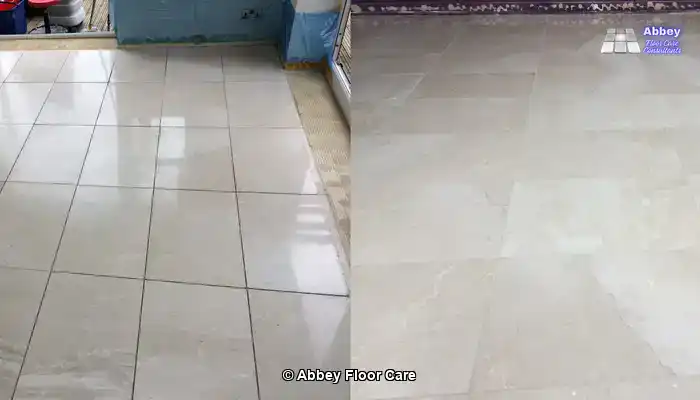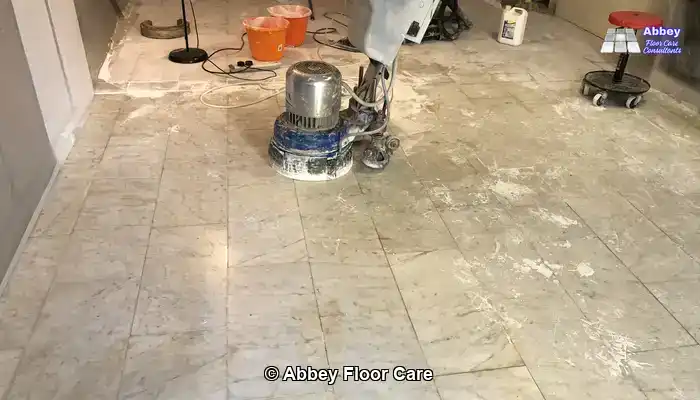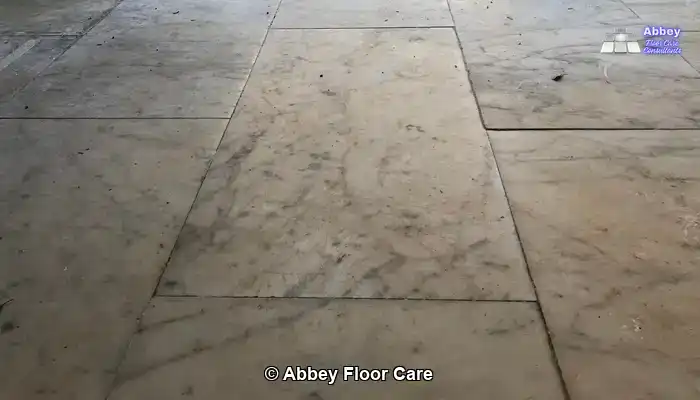
Last Updated on November 6, 2025 by David
Can Marble Be Restored to Its Original Beauty and Elegance?

Key Marble Maintenance Strategies for Homeowners in the UK
Marble is a stunningly beautiful material known for its timeless elegance and sophistication, making it a popular choice for flooring in homes. However, over time, even the most luxurious marble can lose its original clarity, vibrant colour, and shine. Homeowners often face challenges with scratches, dull patches, etch marks, and persistent stains that can lead to a feeling of hopelessness regarding their marble surfaces. This extensive guide aims to clarify the realistic restoration outcomes, while also providing valuable insights into maintaining the marble’s beauty over time. By understanding the processes involved in restoration, especially in cases of acid damage or severe wear, you can confidently decide the best course of action for preserving your stone’s future.
What Does “Like New” Truly Mean in the Context of Marble Restoration?

Reinstating Marble’s Original Shine, Clarity, and Vibrancy
When homeowners express a desire for their marble to appear “like new,” they often refer to the remarkable shine and clarity that originally made their marble flooring captivating. Achieving this stunning effect requires a skilled restoration process that effectively removes surface damage while providing a refined finish. The outcome is a floor that appears vibrant, smooth, and impeccably clean, making it difficult to distinguish from a newly installed slab. It is essential to recognize that reaching this level of restoration requires specialized expertise and techniques to ensure results that last over time.
How to Identify Cosmetic Wear Versus Structural Damage in Marble
When assessing the condition of your marble, it is crucial to differentiate between cosmetic wear and deeper structural damage. Surface scratches, dullness, and light etching can typically be repaired through honing and polishing techniques. In contrast, more significant issues such as cracks, chips, and internal discolouration may not completely resolve through restoration efforts. While the restoration process can significantly improve the visible and tactile qualities of the marble, it does not rebuild the stone itself. Having a clear understanding of these distinctions helps set realistic expectations and ensures satisfaction with the final results.
What Are the Limitations of Marble Restoration: Understanding What It Can Achieve?

How to Effectively Repair Deep Scratches, Chips, and Acid Etching in Marble
Restoration techniques can successfully remove most surface-level damages, including scratches and mild etching caused by acidic substances like lemon juice or vinegar, which can dull the finish and obscure the stone’s inherent clarity. Through honing and polishing methods, it is generally possible to restore a smooth, reflective surface. However, deep scratches and chips necessitate more intensive approaches, such as grinding or filling. While the overall appearance can improve dramatically, some imperfections may remain faintly visible depending on their depth and location within the stone.
What Are the Indicators of UV Damage and Internal Discolouration in Marble?
Marble that has been exposed to intense sunlight over time may develop fading or yellowing, which can significantly impact its appearance.
Here are the primary reasons behind this phenomenon:
UV Ray Damage (Fading): Sunlight, especially its ultraviolet (UV) rays, can cause the natural pigments within the marble to fade over time. This photochemical reaction can lead to the colour becoming less vibrant or appearing “washed out,” an effect that is particularly noticeable in specific marble colours.
-
- <a href=”https://www.abbeyfloorcare.co.uk/home-garden/travertine-floor-cleaning-service-expert-solutions/”>Yellowing</a>: Yellowing in white marble often results from extended exposure to UV light, which accelerates natural discolouration.
- Iron Oxidation: Many types of white marble contain trace amounts of iron. This iron can rust when exposed to moisture and oxidizers, such as air or water, which can be intensified by sunlight and heat, leading to yellow or brown discolouration.
- Surface Degradation: UV rays can also degrade any sealants or resins applied to the marble, resulting in a yellowing effect and dulling the overall appearance of the surface.
While marble is a resilient material, it is more susceptible to UV-induced changes compared to harder stones like granite or quartzite. This vulnerability is particularly critical for marble used in outdoor environments or indoor areas that receive prolonged, intense, direct sunlight (such as a sunny windowsill or near large, unshaded windows).
To effectively safeguard your marble surfaces, it is often recommended to utilize:
- UV-resistant sealants that protect the surface from harmful rays
- Shades, blinds, or curtains for indoor installations
- Strategic placement to minimize exposure to direct sunlight.
While restoration can significantly enhance the surface aesthetic, it cannot reverse colour changes that have originated beneath the marble’s surface.
What Insights Do Before and After Images of Marble with Iron Oxide Stains Provide?


In these scenarios, the focus shifts from achieving a “like new” appearance to creating a cleaner and more uniform finish that minimizes visual distractions while enhancing the overall aesthetic of the space.
What Are the Fundamental Processes in Honing, Polishing, and Comprehensive Marble Restoration?
When Is Polishing Alone Sufficient for Marble Restoration?
Polishing serves as a surface-level treatment designed to restore shine by smoothing out fine scratches and enhancing the reflectivity of the marble. It is particularly effective for dull marble surfaces that have remained structurally sound. If the stone has lost its gloss due to light wear or mild etching, polishing alone may effectively restore a “like new” appearance. However, it is crucial to understand that polishing will not address deeper flaws or rectify uneven surfaces that require more thorough treatment.
When Should You Consider Honing or Grinding for Marble Restoration?
Honing involves a more comprehensive process than polishing, as it removes a thin layer of the marble to eliminate scratches, etch marks, and surface damage. In cases of more significant wear, grinding may be necessary to level the stone and reset the finish entirely. These processes are intensive but yield dramatic results. When homeowners seek a truly fresh surface — one that looks and feels like new — honing or grinding is often the essential step to achieving such a high standard of restoration.
How Do DIY Kits Stack Up Against Professional Restoration for Marble?
What Are the Realistic Outcomes of DIY Kits for Marble Restoration?
DIY marble restoration kits generally include polishing powders, sealers, and basic tools that aim to improve surface shine and reduce the visibility of light etching. For small areas or minor dullness, these kits offer a cost-effective method to refresh the stone. However, it is essential to recognize that they rarely achieve a true “like new” finish. Lacking access to professional-grade abrasives and specialized machinery, deeper imperfections often remain unaddressed, leading to inconsistent results across different areas of the marble.
Why Are Professional Tools Indispensable in Marble Restoration Processes?
Professional restoration services utilize advanced tools, including diamond abrasives, rotary machines, and graded polishing compounds, which operate in a staged process. This specialized equipment enables skilled technicians to level the surface, remove deep damage, and refine the finish with remarkable precision. DIY kits simply lack the power and control necessary to achieve consistent results across larger areas. For homeowners aiming for a flawless, long-lasting outcome, employing professional tools and expertise can significantly enhance the final appearance of the marble.
How Long Can You Anticipate the Restored Marble Appearance to Endure?
What Essential Steps Are Needed for Sealing, Cleaning, and Managing Wear Patterns?
After completing the restoration process, sealing the marble is a vital step that aids in preserving the finish by blocking moisture and minimizing stain absorption. A high-quality sealer can provide protection for 1 to 3 years, depending on foot traffic and usage levels. Regular cleaning with pH-neutral products while avoiding abrasive pads or acidic spills will greatly prolong the life of the restored surface. In high-traffic areas, the finish may gradually dull over time; however, with diligent care, the clarity and shine of the marble can be maintained for many years.
Can Restoration Be Repeated for Continuous Marble Maintenance?
Marble restoration is indeed a repeatable process. If the surface becomes dull or scratched again, it can be rehoned and repolished to restore its former glory. However, it is important to note that each cycle will remove a small amount of stone, so it is advisable to avoid excessive wear between treatments. Homeowners who commit to a consistent maintenance routine — which includes resealing and gentle cleaning — will discover that restoration remains a worthwhile investment over time, helping to keep their marble looking beautiful and well-maintained.
Will Restored Marble Develop Patina Over Time?
What Distinguishes Natural Patina from Artificial Gloss in Restored Marble?
Even after undergoing restoration, marble will continue to age naturally. Over time, subtle wear patterns, micro-abrasions, and environmental exposure contribute to the formation of a soft patina — a gentle sheen that reflects the stone’s unique history. This natural evolution is different from the artificial gloss created through polishing and sealing. While a restored surface may initially appear brand new, it will develop character over time. For many homeowners, this evolving finish adds charm and authenticity, especially in older properties where marble is an integral part of the home’s narrative and aesthetic.
What Are the Frequently Asked Questions by Homeowners in Surrey About Marble Restoration?
What Are the Typical Costs for Marble Restoration in Surrey?
The costs associated with marble restoration can vary widely based on several factors, including the size of the area, the current condition of the marble, and the extent of restoration required. Light polishing is generally more affordable compared to comprehensive grinding and honing. Homeowners in Surrey often choose to invest in restoration when the marble is located in highly visible areas or as part of a long-term property enhancement strategy. Although prices can fluctuate significantly, the true value lies in preserving the stone and enhancing the overall appeal of the home.
Can All Varieties of Marble Be Successfully Restored?
Most types of marble can indeed be restored; however, the achievable results depend on the specific composition and current condition of the stone. Softer marbles may show wear more quickly and respond positively to polishing techniques. On the other hand, harder varieties may require more aggressive honing methods. Some exotic stones, featuring intricate veining or pronounced colour variation, may not return to a uniform finish after restoration. A professional assessment is critical in determining what is realistically achievable for your specific flooring.
Will the Restored Finish Match the Original Marble Installation?
The primary goal of restoration is to recreate the original finish; however, the degree of exact matching will depend on how the marble was initially installed and treated. If the stone underwent factory polishing, the restored surface may show slight variations in gloss level or texture. Nevertheless, most homeowners find the final result visually consistent and significantly more appealing than the worn surface they started with. The emphasis is on improvement rather than perfection — and in most cases, the transformation is nothing short of remarkable.
The Article Will Restored Marble Ever Look As Good As New first found on https://www.abbeyfloorcare.co.uk
The Article Restored Marble: Can It Achieve a Like-New Finish? appeared first on https://fabritec.org
The Article Restored Marble: Achieving a Like-New Finish Was Found On https://limitsofstrategy.com

